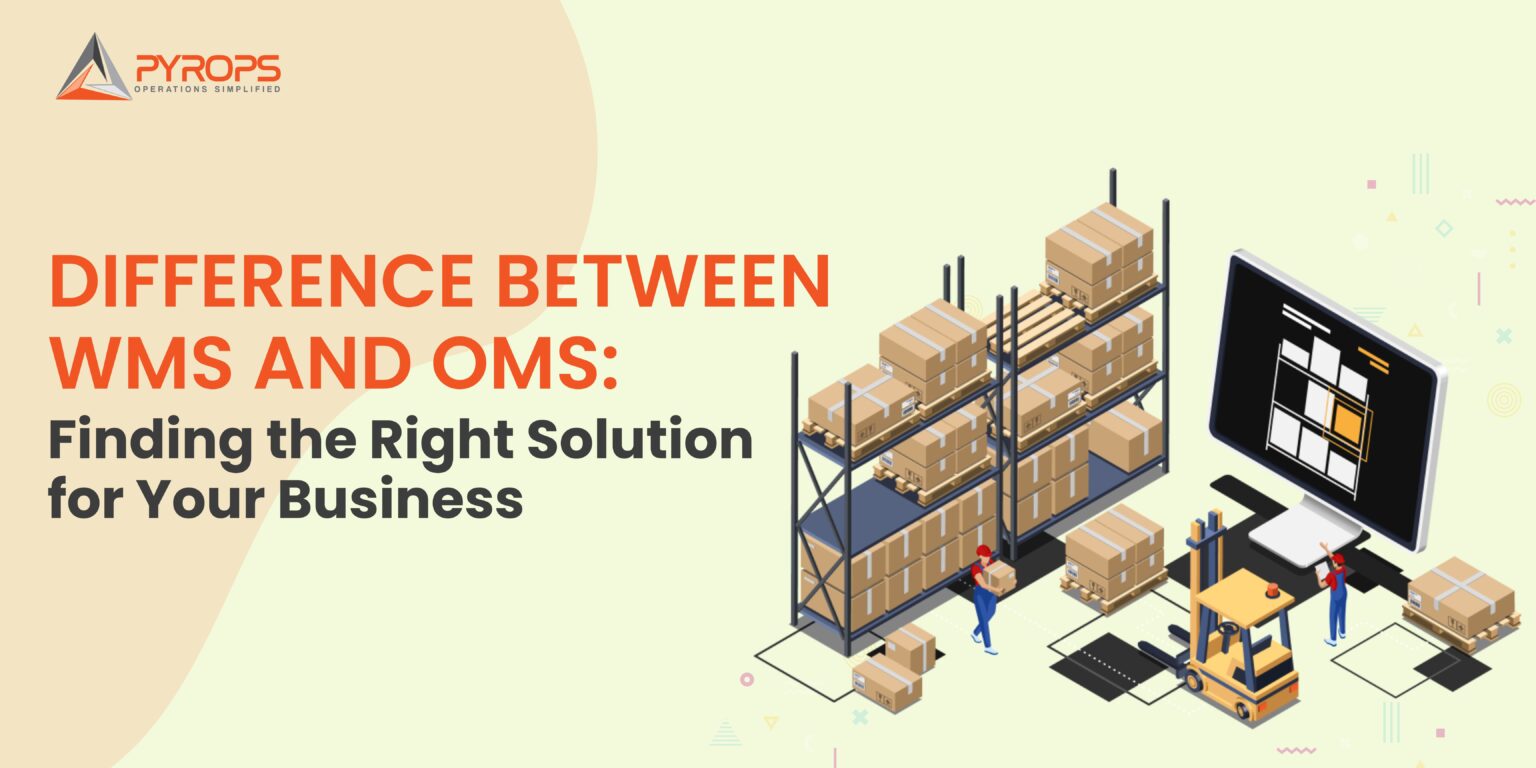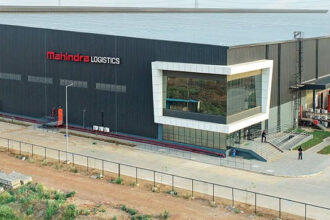Warehouse Management Systems (WMS) and Order Management Systems (OMS) are essential software solutions for B2B businesses. Warehouse mgmt software helps you manage your inventory and warehouse operations, while OMS order management system helps you manage your orders and fulfillment process. WMS systems and OMS systems both play a vital role in optimizing your supply chain, but they have different strengths and weaknesses. WMS is better suited for businesses with large inventories and complex warehouse operations, while OMS is better suited for businesses with a high volume of orders and a complex fulfillment process.
The 2022 State of the Third-Party Logistics Industry Report found that supply chain technology transformation is one of the top trends for the year. As 3PL warehouses evolve to offer more omnichannel fulfillment options, it’s essential to embrace the right technology.
The two technologies are not interchangeable, and choosing the right software solution is crucial for B2B businesses – is a big decision.By understanding the key differences between WMS software and OMS software, you can make an informed decision about which solution is best for your business.
What is a Warehouse Management System?
A Warehouse Management System (WMS) is a software application designed to streamline and automate warehouse operations. It provides businesses with the necessary tools to efficiently manage inventory, track stock movement, and improve overall warehouse productivity. WMS management system enables businesses to optimize space utilization, enhance order fulfillment accuracy, and minimize manual errors.
Key Features and Benefits of WMS
WMS software offers a wide range of features that contribute to effective warehouse management. Some key features include:
Inventory Management: WMS system allows businesses to track and manage inventory levels accurately. It provides real-time visibility into stock availability, enabling efficient order fulfillment and preventing stockouts.
Order Fulfillment: With best Warehouse management systems, businesses can optimize order picking and packing processes. The system suggests the most efficient picking routes, reducing the time and effort required to fulfill orders.
Warehouse Optimization: Warehouse management system software helps optimize warehouse layout and space utilization. By analyzing data on product demand, storage capacity, and order frequency, businesses can arrange their inventory strategically, minimizing unnecessary movement and maximizing storage efficiency.
Real-time Tracking: WMS system provides real-time visibility into the movement of goods within the warehouse. This feature enables businesses to track and trace individual items, enhancing inventory accuracy and minimizing the risk of lost or misplaced items.
The key benefits of implementing a warehouse mgmt system in your business include:
– Improved inventory accuracy
– Enhanced order fulfillment speed
– Increased warehouse efficiency
– Reduced labor costs
– Minimized errors and improved order accuracy
Use Cases of WMS System
WMS software is highly beneficial for businesses operating in various industries. Some common use cases include:
E-commerce and Retail: E-commerce and retail businesses often deal with high order volumes and complex inventory management requirements. Warehousing management enables efficient handling of these challenges by automating processes and ensuring accurate inventory control.
Manufacturing and Distribution: In manufacturing and distribution, Warehouse management systems plays a critical role in optimizing supply chain operations. It helps businesses manage inventory, track shipments, and streamline order fulfillment, ensuring timely delivery and customer satisfaction.
Third-Party Logistics (3PL): 3PL providers rely heavily on effective warehouse management to meet the diverse needs of their clients. WMS software enables them to efficiently handle multiple clients, manage inventory across different warehouses, and track shipments accurately.
What is an Order Management System (OMS)?
An Order Management System (OMS) order management system is a software solution that centralizes and automates order processing, from initial customer request to final delivery. OMS enables businesses to manage orders across multiple channels, ensuring seamless order fulfillment and enhancing customer satisfaction. It consolidates data from various sources, allowing businesses to gain valuable insights into customer behavior and preferences.
Key Features and Benefits of OMS
Order management system offers several features that contribute to effective order management and fulfillment. Some key features include:
Order Processing: OMS system automates the order processing workflow, from order capture to shipment. It eliminates manual data entry, reduces errors, and accelerates order fulfillment, resulting in improved customer satisfaction.
Inventory Visibility: Order management process provides real-time inventory visibility across multiple channels and locations. It enables businesses to prevent overselling, allocate stock effectively, and fulfill orders from the most suitable warehouse or store.
Customer Relationship Management (CRM) Integration: OMS order management system integrates with CRM systems, enabling businesses to maintain a comprehensive view of customer information. This integration facilitates personalized customer experiences, enhances upselling and cross-selling opportunities, and fosters customer loyalty.
Analytics and Reporting: Order management software generates detailed reports and analytics on order metrics, customer behavior, and sales performance. These insights help businesses make data-driven decisions, identify trends, and optimize their overall operations
The key benefits of implementing an OMS in software your business include:
– Streamlined order processing
– Improved inventory management
– Enhanced customer experience
– Increased order accuracy
– Effective sales and marketing strategies
Use Cases of OMS
OMS system is valuable for businesses operating in diverse industries. Some common use cases include:
Retail and E-commerce: OMS software sloutions is essential for managing orders across various sales channels in the retail and e-commerce sectors. It ensures seamless order processing, inventory management, and efficient order tracking, resulting in a positive customer experience.
Wholesale and Distribution: Wholesale and distribution businesses benefit from OMS order management software by automating order processing, managing bulk orders, and tracking shipments across multiple locations. It enables accurate inventory control and timely order fulfillment.
Omnichannel Operations: Businesses with a presence across multiple channels, such as physical stores, online platforms, and mobile applications, rely on OMS systems to synchronize and streamline their order management processes. It ensures consistency and efficiency across all channels, leading to improved customer satisfaction.
Use Cases of OMS
While OMS and WMS share some similarities in terms of optimizing supply chain operations, they differ in their primary focus and functionalities. Here are the key differences between Warehouse management system and Order management system:
Focus: WMS software primarily focuses on warehouse operations, including inventory management, order picking, and warehouse layout optimization. OMS system, on the other hand, concentrates on order processing, tracking, and customer relationship management.
Scope: WMS system manages the internal aspects of warehouse operations, while OMS system extends beyond the warehouse to encompass order management process across multiple channels, including online sales, brick-and-mortar stores, and other distribution points.
Integration: WMS systems often integrate with other systems such as Enterprise Resource Planning (ERP) and Transportation Management Systems (TMS) to ensure seamless end-to-end supply chain operations. OMS order management system integrates with Customer Relationship Management (CRM) systems, enabling businesses to maintain a comprehensive view of customer information.
Key Functionality: Best WMS system emphasizes inventory management, space utilization, and warehouse optimization. OMS focuses on order processing, order tracking, and customer relationship management.
While OMS & WMS serve different purposes, they can complement each other in a broader supply chain management strategy. Integrating both systems can provide a comprehensive solution that optimizes inventory, order fulfillment, and customer satisfaction.
Choosing the Right System for Your Business
When deciding between WMS software and OMS software , it is crucial to assess your business requirements and goals. Consider the following factors:
– Nature of your business operations
– Primary pain points and challenges
– Scale and complexity of your supply chain
– Sales channels and customer touchpoints
– Integration capabilities with existing systems
By carefully evaluating these aspects, you can determine whether you require a best Warehouse management system, an Order management system, or a combination of both to address your specific needs effectively.
Conclusion
WMS system and OMS system are two distinct solutions that play vital roles in optimizing supply chain operations. While Warehouse management software focuses on warehouse management and inventory optimization, Order management software is geared toward order processing, tracking, and customer relationship management. Both systems offer unique features and benefits that contribute to enhanced efficiency and customer satisfaction.
When selecting the right system for your business, it is essential to evaluate your specific requirements and consider the scope and focus of each system. Whether you opt for a WMS system, an OMS system, or a combination of both, implementing the appropriate solution will help streamline your operations, improve inventory control, and deliver an exceptional customer experience.






